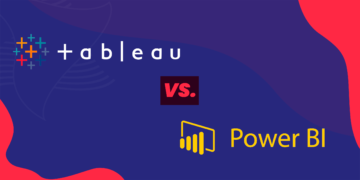The most popular tool for digital marketers is currently slipping away after companies like Google and Apple announced they were blocking cookies from their browsers. So, it’s crucial for marketing players to understand how their activity is evolving and how to make the best out of the evolution of the digital experience in a cookieless world. You may need to shift to a first-party data approach.
You already may know, cookies were essential for the internet to develop, however they are a vulnerability to your privacy. Cookies are text files with small pieces of data that identify your computer as you’re using a network. They are commonly used to streamline web experiences. For instance, without cookies, you’d have to login again after you leave a website or if you accidentally close the page. We can all say that cookies are an important part of the internet experience.
Third-party vs. First-party cookies
If you’re really interested in understanding this digital issue, you first need to know the difference between first-party and third-party cookies. As CookiePro explains:
First-party cookies are directly stored by the website (or domain) you visit. These cookies allow website owners to collect analytics data, remember language settings, and perform other useful functions that provide a good user experience. An example of a first-party cookie is when a user signs into an eCommerce website, like Amazon. The web browser will send a request in a process that provides the highest level of trust that the user is directly interacting with Amazon.
On the other side, third-party cookies are slightly different, as Pardot blog mentions:
Third-party cookies are cookies set by a service provider that doesn’t share the same root domain as the website. Think about the practice of embedding a video player service (videoexample.com) into a page on your website (example.com) that stores the time watched so a user can restore their view across sessions. Since the video service doesn’t share a domain with the website, the cookie set by the service would be a third-party cookie.
Now, stick with us to understand why third-party cookies are going away and how it will affect the digital experience. Here’s our table of contents for this article:
1. Why third-party cookies are ending?
The growing need for user’s data privacy put this topic in trending. ePrivacy Regulation, CCPA and the GDPR created penalties for companies that are failing on notifying web users of the presence of cookies. Also, these kind of regulation demand that website operators let their users understand which information is being collected and to whom this information is shared. It demands too that operators provide an opt out solution at any time.
The impact this change will bring for advertisers are huge. With the data you once gathered with cookies, you could learn a lot about your web visitor’s behaviors, the websites they visit or the interests they have. You could build strong and accurate visitor profiles with cookies. But now this is changing.
To clarify, it doesn’t mean all your work is going down, don’t worry! First-party cookies will stay with us and will be able to reinvent the navigation experience. Given the fast approaching to the end of third-party cookies, brands need to adapt to a new marketing dynamic.
How is first-party data important now?
Now, first-party data turns to be the best option for websites and advertisers to use for its best ROI in terms of understanding your audience and habits. First-party data in a cookieless world will help you understand customer intent and how your customer is positioning in the buying journey. If you identify what your target audience are interested in, you can set their personalised experiences while suggesting products and content they will like to see.
2. Shifting to first-party data
Firstly, by losing access to third-party data, marketers need to generate personalised customer insights without breaking privacy rights. As a result, this demands that brands focus on driving more insights from first-party data for effective personalisation.
You, as a company, can track and observe user behavior in your own properties. This means, your website and your other digital media channels. Therefore, gathering substantial amounts of data from these sources allows you to create dynamic and engaging experiences that will attract customers to keep coming back, always ensuring your visitor’s data privacy.
Enabling a customer-centric approach
Customers no longer want to be tracked and targeted. They want real human experiences, with personalised interactions across all your brand’s touchpoints.
Acquiring your own data about customers, with their permission and consent, feels like a more reliable and stable brand, isn’t it? After that, customers don’t mind to give brands their information in exchange of a better and personalised digital experience. The type of data you will collect with a first-party data approach will be more accurate and also demonstrates how much a customer trusts your brand.
Consequently, with a first-party data strategy you are relying in precision and accuracy. You can then predict relevant messages across all customer channels. However, to really benefit from first-party data, you need to collect it, analyse it and then go to action. For this to happen, your best shot is to unify your data within a single place.
Unifying your first-party data
To pursue a first-party data strategy you need all your data in one place. This is a hard challenge if the data your company is collecting is spread across multiple sources.
These silos apear as companies adopt more and more digital tools to collect data. Moreover, each new silo is a potential data security risk and only makes it difficult for marketers to work. How is supposed to find and access all information?
For this, you may rely your solution in a single platform like Salesforce. According to Acquia, marketers are looking for solutions that:
-
- Unify all customer data across a single source of truth
- Protect privacy of customer data
- Perform high-end analysis from customer insights
- Integrate with your entire martech solutions
All you need is a customer data platform, like Salesforce CDP.
3. CDP makes it great
First, using a CDP like the one from Salesforce, helps you standardize and enhance data from all sources. It gives your marketing team a holistic view of each customer. And, with advanced analytics tools like machine learning, this solution allows you to explore even more the data you gather.
In conclusion, a platform like Salesforce CDP helps you center your effort with a single source of truth. You can unify data from anywhere, designing a complete view of your customers, while matching data to a specific person and understanding your audience across your organization.
Also, it allows you to build audience segments with a simple drag-and-drop solution: you can build your platform the way it best suits your company! For instance, with unified customer data, you can easily test and optimise your strategy on the go, managing audiences smarter.
Data activates no matter where you store it. You can gather data from anywhere in your organisation, reaching your customers at any step of their buying journey and engaging with them on a 1-to-1 level. Also, with the AI features included in the solution, you can connect every customer to their engagement behavior!
You now know how to overpass the third-party data issue, don’t you? If you’re ready to implement a Salesforce solution to solve your marketing challenges, we are here to help. Feel free to contact us! We’re glad to help you on your journey. And also, don’t forget to subscribe to our Knowledge Center.
SUBSCRIBE KNOWLEDGE CENTER
Subscribe for free to our Knowledge Center to get the latest articles straight to your inbox!







